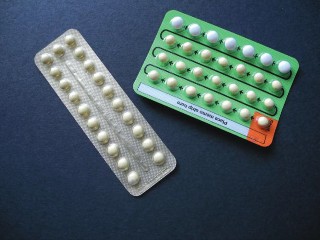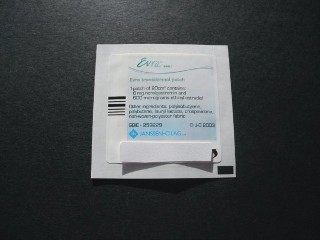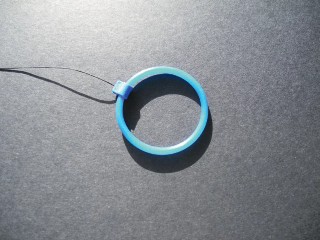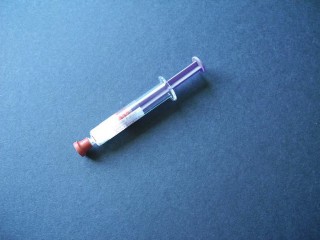Fundamentals of Midwifery: A Textbook for Students (115 page)
Read Fundamentals of Midwifery: A Textbook for Students Online
Authors: Louise Lewis

BOOK: Fundamentals of Midwifery: A Textbook for Students
12.09Mb size Format: txt, pdf, ePub
The progesterone only pill (POP) works slightly differently from the combined pill and there are two types of POP. One works mainly by preventing ovulation and has a 12-hour window in which it can be taken and therefore it is very effective (99%). The other works mainly by preventing the sperm entering the cervix, but it must be taken within 3 hours to be effective (96%). POP methods can result in amenorrhoea or changes in menstrual pattern. There is also the possibility that they can increase appetite levels resulting in increased weight in some cases. The POP can be commenced at 21 days following the birth and is the most appropriate pill for breastfeeding women. It is a more suitable method for those women who have an increased BMI, or suffer from migraines, and for women who would not be suitable for use of the combined pill particu- larly if they are over 35 years and smoke (see Figure 12.5).
Contraceptive patch
The patch is 99% effective when used correctly. It consists of an adhesive patch applied to the upper arm, body or buttock which releases oestrogen and progesterone into the bloodstream. This is applied once a week for 3 weeks with a patch-free week to allow for a breakthrough bleed. A major advantage of this method over oral contraceptives is that its effectiveness is not affected by any diarrhoea or vomiting. This method is ideal for women who have problems with compliance with oral contraception. It is not however suitable for women who have

Figure 12.5
Different types of contraceptive pill.

273

Figure 12.6
Contraceptive patch.
hypertension or high BMI and those who smoke, due to the increased risk of thromboembolism. The patch can also be used from day 21 following the birth, but is not suitable for those women who are breastfeeding due to the oestrogen content (Figure 12.6).
Contraceptive ring
This is a plastic ring inserted into the vagina that releases oestrogen and progesterone. It is 99% effective when used correctly. The ring is left in the vagina for 3 weeks and then removed for a ring free week in which a withdrawal bleed may occur. This method offers good menstrual cycle control and has a lower daily oestrogen dose than the patch and combined pill. The ring can be used from day 21 following the birth, but is not suitable for those women who are

274

Figure 12.7
Contraceptive ring.
breastfeeding or whose vaginal muscles cannot hold the vaginal ring in place. Its effectiveness is not affected by diarrhoea or vomiting (see Figure 12.7).
Long-acting methods
Implant
An implant is a small flexible rod which remains under the skin surface and slowly releases progesterone. This method is 99% effective and the contraceptive effect is rapidly reversed on removal. An implant is used for 3 years and ideal for those women who have problems with taking a pill daily. It can be fitted from day 21 following the birth and can be used by breastfeed- ing women. An implant does requiring fitting and removal by a trained health professional. A disadvantage can be an associated change in menstrual pattern; this problem can be corrected with the use of oestrogen pills if these are not contraindicated.
Injection
This method is over 99% effective and contains progesterone which prevents ovulation. The injection is usually given every 12 weeks and is useful for those women who do not take the pill reliably. It can be given from day 21 following the birth, but waiting until 6 weeks is more appropriate, as irregular/heavy bleeding can occur if given earlier. This method does not affect breastfeeding, but can cause amenorrhoea or changes in menstrual pattern in some women. It cannot be immediately reversed in the event of side effects and it can take some time for fertility to return to normal. Therefore, it is not a suitable method for those women planning a shorter gap between children (see Figure 12.8).
Intrauterine device (IUD/coil)
This is a copper and plastic device which is inserted into the uterus. Essentially it works by causing an increase in the white blood cells in the cervix which prevents sperm entering. This method is 98–99% effective and can last between 5–10 years dependent on the type of coil inserted. It is an ideal method for women not wanting to use hormones, those who are consid- ering having a wider gap between children or where the family may be complete. The IUD can also be used as a form of emergency contraception and can be fitted up to 5 days after

Figure 12.8
Contraceptive injection.

275
unprotected sex; in some cases it can then be left in situ as a long-term form of contraception. Periods can become heavier, longer and more painful initially but this should soon settle. Women are advised to feel for the threads of the coil after each period to ensure it remains in situ and has not been expelled during a heavy period. A coil can be fitted after 4–6 weeks fol- lowing the birth regardless if the woman has had a vaginal or caesarean section birth. A coil requires fitting and removal by a trained health professional.
Intrauterine system (IUS)
This is a T-shaped device that is placed in the uterus and releases progesterone hormone. It lasts up to 5 years and is a rapidly reversible method of contraception. It is therefore recommended instead of sterilisation as it allows women change their mind. This method can cause amenor- rhoea and changes in the menstrual cycle. It can be fitted from 4–6 weeks following the birth and does not have any effect on breastfeeding. The IUS must be fitted and removed by a trained healthcare professional (see Figure 12.9).
Natural methods
Rhythm method
This method involves recognising the fertile and infertile times of the menstrual cycle to plan when to avoid sex. This method requires the monitoring of body temperature, cervical mucus and menstrual cycle length. It avoids the use devices or hormones and can be used at all stages of reproductive life. It can take up to 6 months to learn effectively; however times of stress or illness can make the method unreliable. This method is more difficult to use after childbirth as fertility signs are harder to interpret.
Lactational amenorrhoea method
This method is 98% effective before periods return and when totally or very nearly totally breastfeeding a baby under 6 months (Szarewski and Guillebaud 2000; Van der Wijden and Kleinen 2003). Midwives often view this as an unreliable method of contraception (Jackson 2005) but the evidence does refute this belief where breastfeeding is undertaken day and night

Other books
Elder Isles 2: The Green Pearl by Jack Vance
The Billionaire's Secrets by Meadow Taylor
Sword of Rome by Douglas Jackson
Sweet Surrender with the Millionaire by Helen Brooks
Lone Wolf #6: Chicago Slaughter by Barry, Mike
Between the Cracks and Burning Doors: Book 2 of The Extraction List Series by Meland, Renee N.
Resisting the Bad Boy by Duke, Violet
Doctor Who: Planet of Fire by Peter Grimwade, British Broadcasting Corporation
The Secret Crown (2010) by Chris Kuzneski